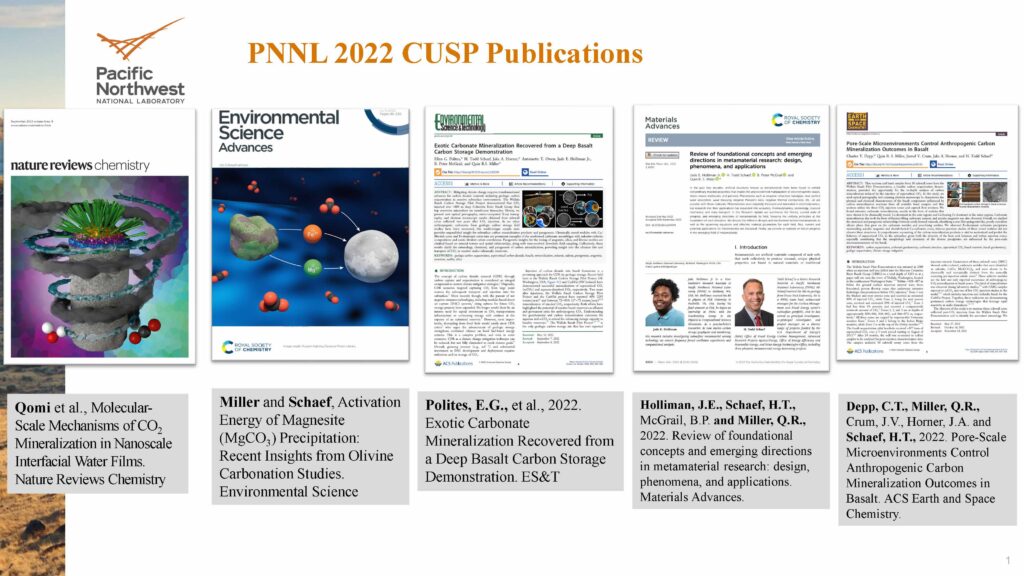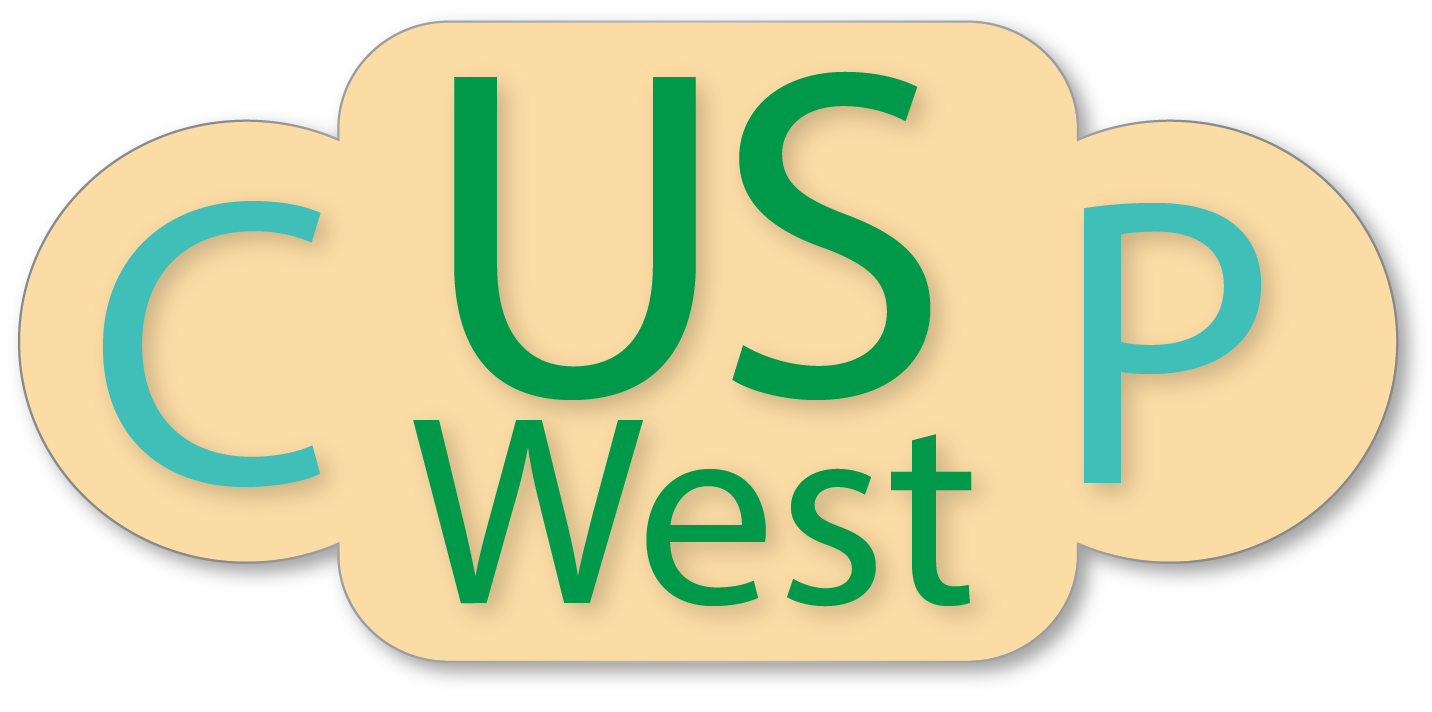CCUS Western States
Washington
As a partner in CUSP, the Washington Geological Survey (WGS, a division of the State of Washington Department of Natural Resources) will gather subsurface data on suitable storage reservoirs in Washington State by compiling and refining past reservoir mapping and improving reservoir property reporting through well log analysis. WGS will digitize the state’s heritage oil and gas well logs to increase efficiency of geologic interpretation and data-sharing. The goal of this work is to produce carbon sequestration prospect maps that may be used by the public, industry, and government agencies for planning carbon capture, utilization, and sequestration projects and reducing atmospheric CO2.
There are two main target plays for carbon sequestration in Washington State. In western Washington, Eocene sandstones are proven reservoirs for commercial gas storage and will be considered for CO2 injection. In eastern Washington enormous volumes of Miocene flood basalts are storage targets for permanent, mineralized carbon sequestration. Past work at Wallula, WA proves the practicality of injecting and mineralizing CO2 in the Columbia River Basalt Group.
WGS will also work to engage the public in project planning. Throughout this process, WGS is dedicated to considering health equity and social vulnerability in modeling project outcomes. WGS will also provide geological expertise to assist responsible agencies and industries in monitoring, reporting, and verifying CO2 sequestration.
WGS work in CUSP will help the State of Washington execute its future energy strategy while connecting the state to a network of sequestration options that benefit the entire CUSP region. Carbon sequestration is an important solution to the problem of anthropogenic climate change. We can solve this!
Geologic Carbon Sequestration Fact Sheet
Contact:
William Gallin
Washington Geological Survey
Email
Pacific Northwest National Laboratory
Pacific Northwest National Laboratory (PNNL) has pioneered both laboratory and field pilot studies examining the potential for large-scale injection and storage of CO2 and natural gas in flood basalts. In 2013, a 1,000-tonne CO2 injection was completed into the basalts near Wallula, Washington. Findings from Wallula confirmed earlier laboratory experiments that the injected CO2 is rapidly converted to stable carbonate minerals (~60% mineralized in 24 months). Mineralization trapping is the most secure CO2 storage mechanism and, at these rates, is unique to basalts and other mafic rocks. These projects, combined with other regional geologic characterization studies, provide a solid foundation to evaluate CO2 storage resources to support key regional CO2 point sources and emerging direct air capture technologies.
Significant work remains to support selection and development of a storage complex to serve commercial-scale demand from existing and potential CO2 sources in this growing industrial area. PNNL’s CUSP team leverages expertise gained through the extensive characterization of the Columbia River Basalt Group (CRBG) under the DOE’s Basalt Waste Isolation Plant (BWIP) program; the successful pilot-scale demonstration of CO2 storage and mineralization under the Wallula Basalt Pilot Project (WBPP); decadal long laboratory-based CO2 mineralization studies of CRBG samples at PNNL, and the development of Iceland’s Orca project (CarbFix).
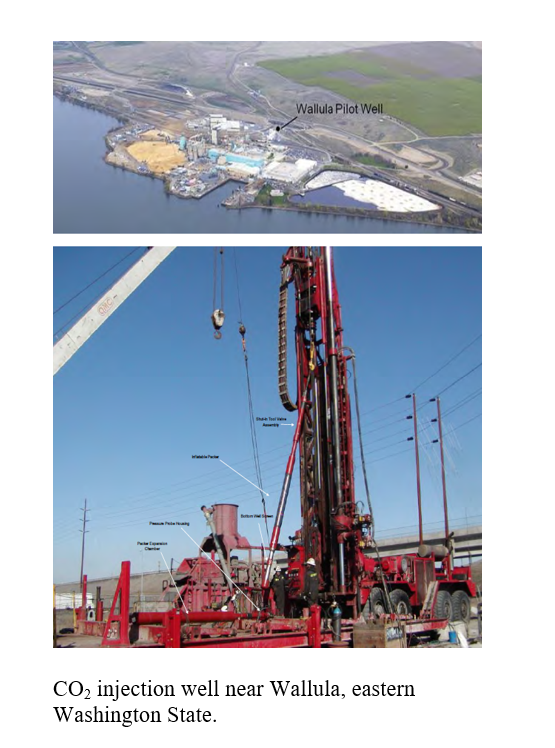
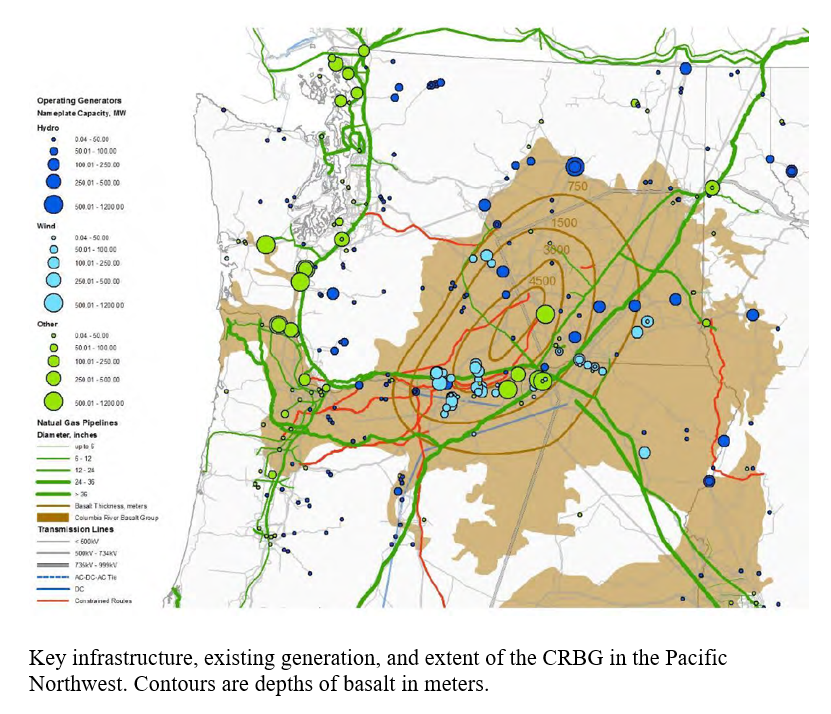
Significant work remains to support selection and development of a storage complex to serve commercial-scale demand from existing and potential CO2 sources in this growing industrial area. PNNL’s CUSP team leverages expertise gained through the extensive characterization of the Columbia River Basalt Group (CRBG) under the DOE’s Basalt Waste Isolation Plant (BWIP) program; the successful pilot-scale demonstration of CO2 storage and mineralization under the Wallula Basalt Pilot Project (WBPP); decadal long laboratory-based CO2 mineralization studies of CRBG samples at PNNL, and the development of Iceland’s Orca project (CarbFix).
Currently, the PNNL project team is characterizing the basalt storage system from nanometer-scale mineralogy, chemistry, and paragenesis of carbonation to kilometer-scale geologic modeling and reservoir simulation. Our optical petrography, micro-computed X-ray tomography, and electron microscopy results obtained from sidewall cores aid in the development and parametrization of predictive models, critical during permitting and monitoring stages of a carbon storage operation (Polites et al., 2022). PNNL’s proprietary STOMP-CO2 numerical transport simulator provides a near perfect match to the observed reservoir response and indicates over 60% of the injected CO2 is converted in 24 months at Wallula (White et al., 2020).
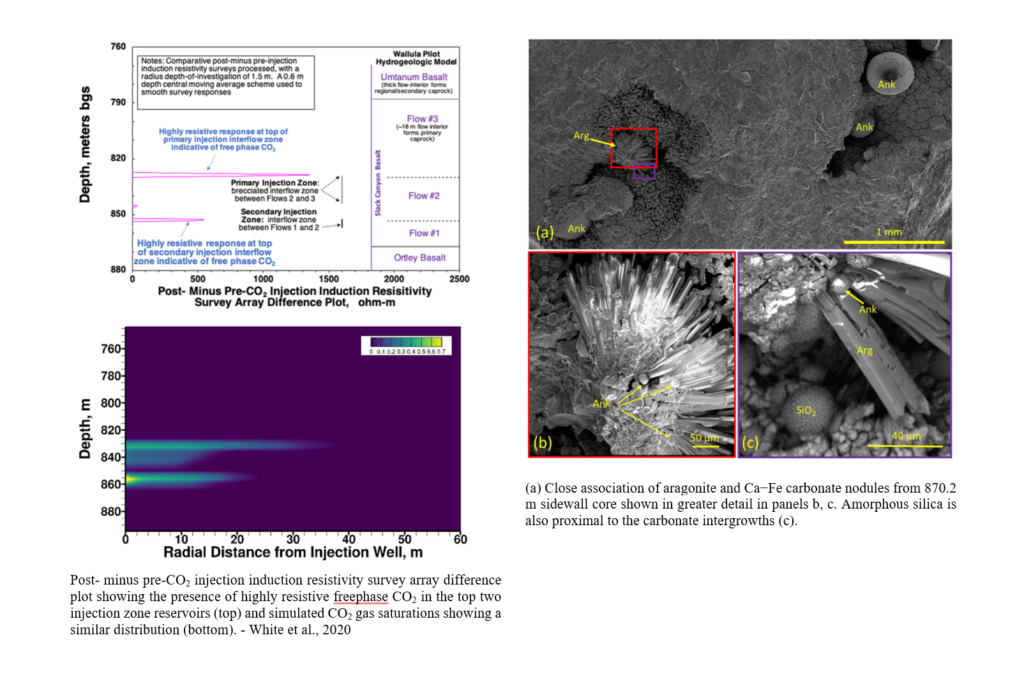
PNNL is working from day one to establish strong relationships and ongoing dialog with developers, financers, regulators, landowners, and communities whose partnership will be essential to our effort. Ultimately, our technical work exists to help inform the decisions of the stakeholder groups who will capitalize, finance, host and operate these projects.
Currently, the PNNL team is focused exclusively on R&D needed to accelerate adoption of CCUS in basalt-bearing regions. This prioritizes efforts to address key uncertainties impacting project cost and risk, including injectivity, mineralization rates, and realizable storage capacity. Based on over 20 years of screening, siting, characterizing, permitting, and developing geologic CO2 storage projects – including the first Class VI permit for FutureGen and the world’s first and only scCO2 basalt project at Wallula, PNNL prioritizes these tasks and outcomes:
– Develop regional geologic model using existing geologic and hydrogeochemical data
– Perform numerical simulation of large-scale scCO2 injection to provide uncertainty-bounded estimates of storage capacity and injection rates for key target intervals
– Identify priority areas and options for acquisition of new datasets to resolve key uncertainties
– Define a development plan focused on characterization, permitting and certification of basalt-based storage critical to CCS deployment in the Pacific Northwest
– Engage with regional stakeholders, including regulatory, policy, industry, environmental and other groups to understand regional deployment dynamics and help develop advocacy
Contact:
Todd Schaef +1 (509) 371-7102 todd.schaef@pnnl.gov
Ross Cao +1 (509) 375-3985 ross.cao@pnnl.gov
Project Team:
Quin Miller +1 (509) 371-7765 quinrs.miller@pnnl.gov
Mark White +1 (509) 372-6070 Mark.White@pnnl.gov
Katherine Muller +1 (509) 375-6349 katherine.muller@pnnl.gov
Recent Publication:
